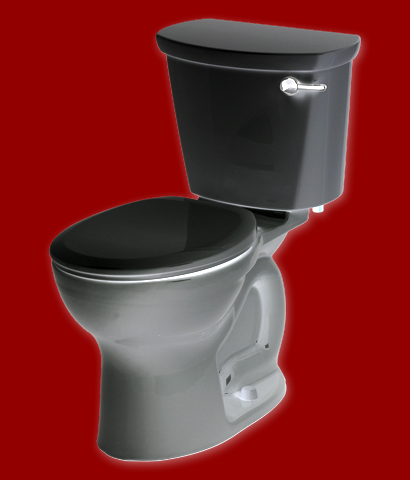Toilet study shows flinging risks
 Experts have assessed how far droplets of toilet water can fly from a flushed toilet with the lid up.
Experts have assessed how far droplets of toilet water can fly from a flushed toilet with the lid up.
The study highlights the dangers of open toilet lids, uncovered rubbish bins and defective plumbing drains in spreading infections in public washrooms.
The research showed that bioaerosols can potentially be transmitted throughout a multi-storey building by defective plumbing, and that leaving toilet lids open after flushing can disperse contaminated droplets beyond a metre.
Uncovered rubbish bins in public bathrooms were also flagged as a risk, especially if located under or close to electric hand dryers.
The study by researchers from the Australian National University (ANU) and University of South Australia assessed 38 different studies from 13 countries that investigated the risk of infectious disease transmission in public washrooms.
Aside from considering the risks of COVID-19 transmission in bathrooms, the review also analysed other infectious disease risks from public toilets in restaurants, workplaces, commercial premises and universities.
The results showed widespread evidence of contaminated surfaces as a cause of faecal-oral transmission, but no documented instances of airborne-related infectious disease transmission.
UniSA environmental scientist Professor Erica Donner, says anecdotal evidence suggests that public washrooms have been avoided by users in the past 18 months due to perceived risks of COVID-19 transmission.
“Some people have been worried about using public washrooms during the pandemic, but if you minimise your time in the bathroom, wash and dry your hands properly, and don’t use your mobile phone, eat or drink, then the risks should be low, especially if the bathroom is well maintained,” Prof Donner says.
“While there is limited evidence of COVID-19 transmission via public washrooms, they are rife with bacteria, especially those that are used frequently and not cleaned properly.”
A wide range of intestinal, skin, and soil bacteria and respiratory viruses were identified in public washrooms, posing risks of transmission.
Open-lid toilet flushing, ineffective hand washing or hand drying, poor surface cleaning, blocked drains and uncovered rubbish bins all contribute to heavy bacterial and viral loads in washrooms.
Six studies investigated bacterial dispersal in public washrooms, showing jet air dryers can potentially spread droplets as far as three metres, and toilet flushing spreading particles as far as 1.5 metres and remaining in the air for more than 30 minutes.
One 2021 study estimated that the number of particles from a toilet flush was equivalent to droplets from a person talking loudly for just over six and a half minutes.
“Although there is a potential risk of aerosols spreading from toilet flushing and hand drying, we found no evidence of airborne transmission of intestinal or respiratory pathogens in public bathrooms in the literature we reviewed,” Prof Donner says.
“However, there is no doubt that thorough hand washing and effective hand drying is critical in stopping the spread of diseases.
“As borders open up and cases increase, people can protect themselves against COVID-19 infection by continuing to practice good hygiene. This includes handwashing and sanitising, disinfecting door handles, toilet lids and other frequently touched surfaces.
“These habits will not only lower the risk of COVID-19 infection but also limit the risk of bacterial infections.”







 Print
Print